Reverse Designed Prosthetic Limbs by Using the EinScan 3D Scanners

In the world of 3D scanning and 3D printing, reverse engineering is the most commonly used application across multiple industries. Being able to 3D scan an object and create a customized product is an invaluable skill. 3D scanners allow for the capture of organic and inorganic shapes alike, making them the ideal tool for industries that would struggle with traditional CAD design methods. One such industry is prosthetics. While the functionality of a prosthetic limb is its most important feature, the fit and form of the prosthetic can be just as important for the patient. The comfort a well-fitting prosthetic provides can make a world of difference as does the confidence provided by a prosthetic limb that suits its user’s appearance. 3D scanners have opened a gateway into customization, and customized prosthetic solutions are now a reality for many amputees. The EinScan Pro line of handheld 3D scanners, and the SHINING 3D industrial 3D printers, make 3D scanning and 3D printing for medical applications more accessible than it has ever been.
The EinScan Pro and Pro 2X line of scanners are as ambitious as they are multifunctional. The handheld capability of the scanners allows them to scan larger objects with ease and make scanning human body or human body parts a simple task. SHINING 3D’s flagship scanner, the EinScan Pro 2X Plus, can scan a human leg in a matter of seconds and the captured scan data can be processed, customized, and 3D printed faster than has ever been possible. We’ll explore just how easy it is to customize prosthetics shell using the EinScan Pro line of 3D scanners.
We begin by taking a 3D scan of the patient’s prosthetic leg. Using the EinScan Pro+ Handheld Rapid Scan mode, the scan is taken within a matter of seconds. The collected scan data is accurate enough to reverse engineering and allow for the creation of a customized prosthetic shell. A separate scan of the patient’s other leg is taken as a reference. This gives us an accurate representation of the overall size and form of the patient’s leg. The goal is to make the prosthetic shell as close to the real leg as possible.




Once the data is captured and the scan completed, the file is exported directly into Geomagic Essentials. 3D System’s Geomagic Essentials is the ideal bridge for 3D scan to design solutions. Working with organic shapes in CAD environments can prove to be a difficult task for even the most seasoned veterans, but the tools provided in Essentials allow for the seamless transition of your 3D scans into your native CAD platform.
The prosthetic’s scan data is imported into Essentials where the data can be cleaned up. Coordinates are assigned onto the 3D model making it easier for reverse engineering. The contours and overall shape and geometry of the piece are extracted and defined using the available tools.
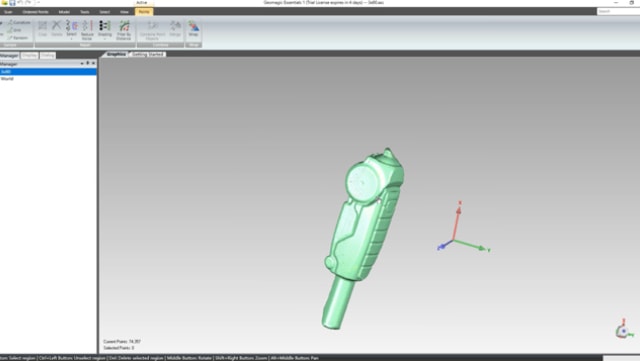
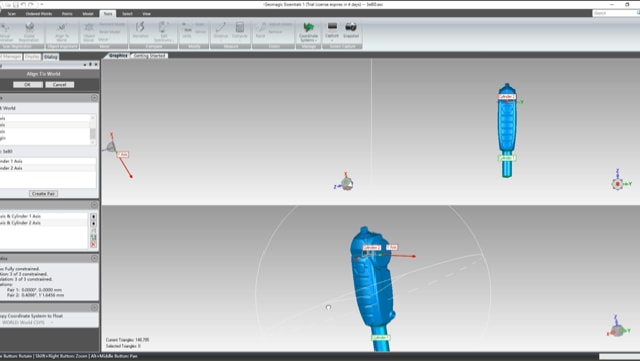
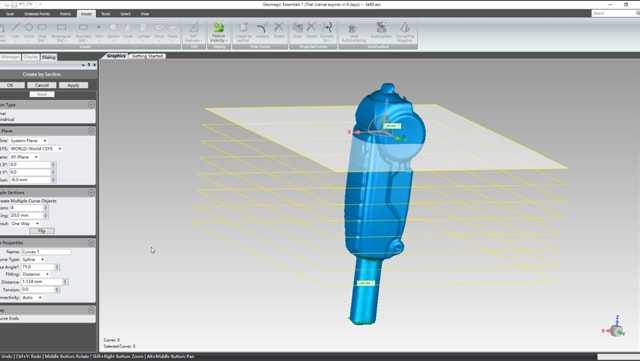

From there the 2nd set of scan data, the patient’s leg, is imported into Essentials. The process is repeated, and the 3D model is prepped for reverse engineering.


Once both sets of data are properly aligned and processed, they are exported into Solid Edge SHINING 3D Edition. Solid Edge is a professional CAD software that allows for the reverse engineering of 3D scans. The software allows for both scans to be imported directly. The 2 models are reverse engineered individually. The prosthetic is used as the mechanical part of the CAD model while the scan of the leg is used as the reference for the shell around the prosthetic. The design and shape of the shell is customized using the scan from the patient’s leg.





Once the shell overall design is complete the Generative Design function of the software is used to finalize the design given the parameters of the 2 parts. The result is a completely functional prosthetic shell that accounts for the patient’s weight and the forces that are applied when running, walking, or other physical activities.

The customized 3D model is then saved and printed using SHINING 3D’s EP-P3850 SLS 3D printer. The completed print is then post processed and prepared for the patient. The printed shell fits perfectly into the patient’s prosthetic leg.

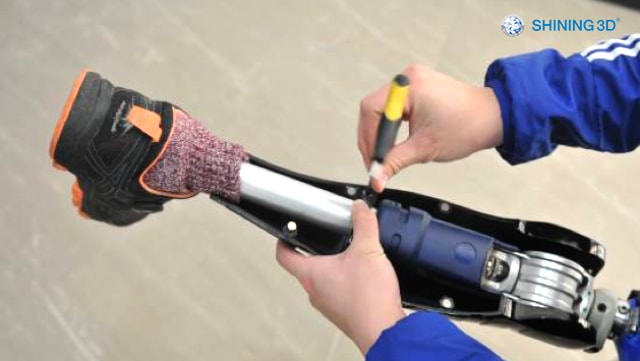
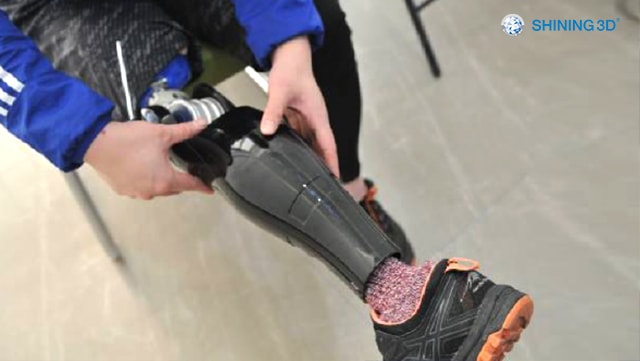
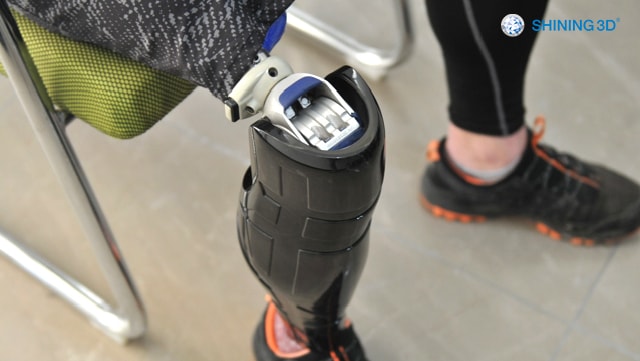
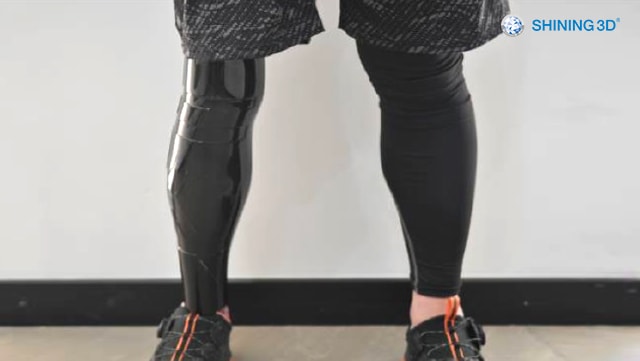
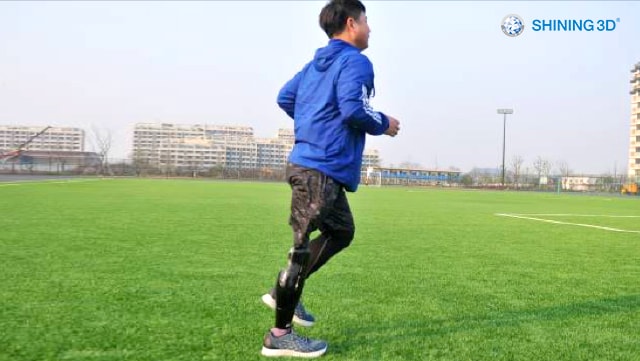
The EinScan Pro line of handheld 3D scanners makes 3D scanning for medical applications more accessible than it has ever been. SHINING 3D’s RED Bundle provides everything necessary for complete 3D Scan to Design solutions and industrial grade 3D printers like the EP-P3850 bring to these designs to life with amazing precision. Customization has never been more accessible. SHINING 3D brings you the complete 3D Scan-Design- 3D Print solution. For more information on pricing, specifications, or availability please contact your local sales rep at sales@shining3d.com.





